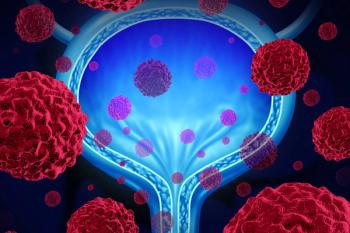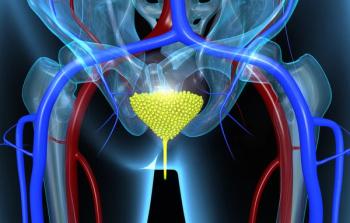
Does Erdafitinib Show Clinical Benefit in Locally Advanced or Metastatic Urothelial Carcinoma?
Erdafitinib is a tyrosine kinase inhibitor of fibroblast growth factor receptor 1 through 4 and was approved by the US Food and Drug Administration earlier this year as a second-line treatment for patients with locally advanced or metastatic urothelial carcinoma with susceptible FGFR3 or FGFR2 genetic alterations.
Erdafitinib appeared to be effective as a second-line treatment in locally advanced or metastatic urothelial carcinoma patients with fibroblast growth factor receptor (FGFR) alterations, showed the results of a phase II, open-label trial recently published in
Erdafitinib is a tyrosine kinase inhibitor of fibroblast growth factor receptor (FGFR) 1 through 4 and was
During an interview with Cancer Network,
The trial was conducted at 126 sites in 14 countries and enrolled patients with locally advanced and unresectable or metastatic urothelial carcinoma and measurable disease. To be eligible, patients had to have at least one FGFR3 mutation or FGFR2/3 fusion. The primary endpoint of the trial was objective response rate.
The trial was designed to randomize patients to receive 28-day cycles of erdafitinib at an intermittent dose (10 mg per day, with daily administration for 7 days and off for 7 days) or continuous dose (6 mg per day). After a planned interim analysis, enrollment to the intermittent dose was stopped and the protocol was amended to give patients a continuous dose of 8 mg per day, referred to as the selected regimen.
A total of 210 patients were eligible for the trial, and 33 received the intermittent regimen and 78 the continuous regimen; 99 patients received the selected regimen.
A total of 46% of patients who received the selected regimen had treatment-related adverse events of grade 3 or higher, with the most common adverse events being hyponatremia (11%), stomatitis (10%), and asthenia (7%).
Fifty-five patients who received the selected regimen needed a dose reduction, and stomatitis (16 patients) and hyperphosphatemia (9 patients) were the most common adverse events that resulted in a dose reduction. In addition, 13 patients stopped treatment due to adverse events, which included detachment of the retinal pigment epithelium, hand–foot syndrome, dry mouth, and skin or nail events.
Thomas commented that there are “unique” toxicities to consider with erdafitinib and that issues with erdafitinib include the potential for adverse events, need for eye exams, and need for lab monitoring for dose titration.
Among the patients who received the selected regimen, 40% responded, of which 3% were complete responses and 37% were partial responses, and responses lasted for a median of 5.6 months. For patients who received immunotherapy as their prior therapy, the objective response rate was even higher-59%. The selected-regimen group had a median progression-free survival of 5.5 months and median overall survival of 13.8 months.
Given the efficacy findings, Thomas said, erdafitinib seems like a “very attractive” second-line option for patients with FGFR activating mutation or fusion. However, he noted, because these are based off a phase II non-randomized trial, they “should be interpreted with caution.”
Thomas said the best option for patients who need a second-line treatment is a clinical trial, such as the currently recruiting THOR
Newsletter
Stay up to date on recent advances in the multidisciplinary approach to cancer.

















































































